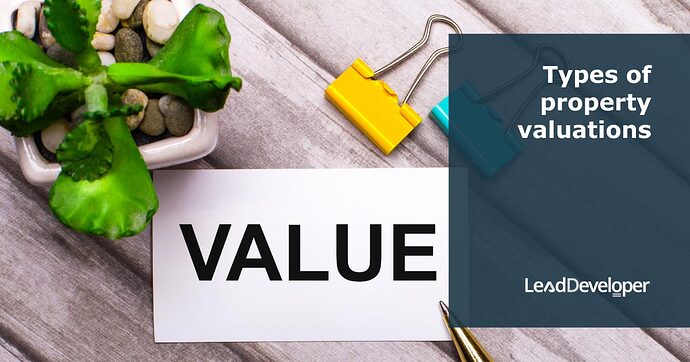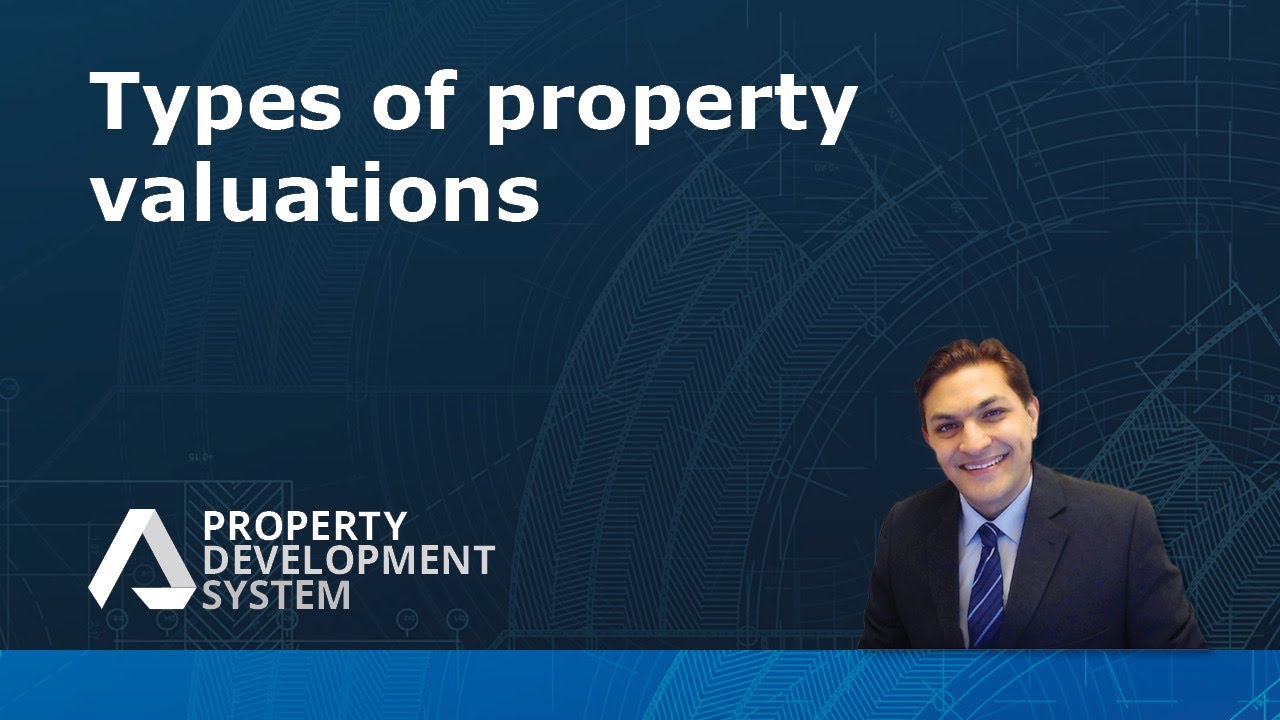Types of Valuations
This article provides a comprehensive understanding of the differences between retail and commercial retail valuations, as well as the intricacies involved in assessing the residual value of land in commercial projects. Explore the purpose, costs, process, and importance of these valuations in the context of real estate acquisitions and development finance.
By examining the factors that contribute to the cost differences between the two types of valuations and understanding the significance of the residual land value in commercial valuations, we can gain insights into the financial and analytical considerations that underpin these evaluations.
This exploration is not only essential for professionals in the real estate and development sectors but also offers valuable knowledge for anyone interested in the financial mechanisms that drive property valuations and project feasibility assessments.
Retail Valuations
Typically less expensive, used for residential property acquisition. Prices range from $400 to $1,000.
Commercial Retail Valuations
For development finance or construction loans. Consider completion value, project costs, and details. Comprehensive, taking 3-4 weeks, costing around $4,000-$4,500.
Insights based on numbers
- The cost of retail valuations reflects the expedited service requirement, indicating a direct correlation between speed and price.
- Commercial retail valuations’ higher costs and longer duration underscore their complexity and the thoroughness required in assessing development projects.
Frequently Asked Questions
How does the valuation process differ between retail and commercial retail valuations?
Retail Valuations
Retail Valuations are primarily used for the acquisition of residential properties. They are relatively more affordable and faster to obtain, with costs ranging between $400 to $1,000. The urgency of the valuation can increase the cost, highlighting a direct correlation between speed and price.
Commercial Retail Valuations
Commercial Retail Valuations serve more significant financial undertakings, such as obtaining development finance or construction loans. These valuations are more comprehensive, considering factors like on-completion value and detailed project costs.
Due to their thorough nature, they require more time (approximately three to four weeks) and are considerably more expensive, with costs around $4,000-$4,500. The report generated can span up to 50-60 pages, reflecting the valuation’s depth and complexity.
This distinction underscores the specific uses and expectations from each type of valuation, with commercial retail valuations demanding more in-depth analysis due to their application in larger scale financial decisions and project planning.
What factors contribute to the cost difference between retail and commercial retail valuations?
Purpose and Application
Retail valuations are aimed at residential property acquisitions, requiring less detailed analysis compared to commercial retail valuations, which are intended for securing development finance or construction loans.
Detail and Scope
Commercial retail valuations are more comprehensive, taking into account the on-completion value of a project, all associated costs, and requiring detailed documentation of every expense. This extensive analysis contributes to their higher cost.
Report Length and Complexity
The complexity of commercial valuations is reflected in their report length, which can be up to 50-60 pages, versus the simpler and shorter reports for retail valuations.
Time Frame
Retail valuations are quicker to complete, affecting their cost. In contrast, commercial valuations take significantly longer (about three to four weeks), justifying the higher price due to the increased time investment and depth of analysis.
How do commercial valuations assess the residual value of land, and why is it important?
Commercial valuations assess the residual value of land as part of their comprehensive analysis. This assessment is crucial for several reasons:
In-depth Project Evaluation
Commercial valuations consider the on-completion value of a project, incorporating all project costs and detailed expense documentation. This thorough approach ensures that every aspect of the project is evaluated, including the land’s residual value.
Residual Value of Land
The residual value of land is determined by analyzing the project’s financial feasibility, including costs and expected revenues. This value is crucial for understanding the land’s worth after all development costs have been accounted for.
Importance in Financing
Assessing the residual value of land is vital for obtaining development finance or construction loans. Lenders use this value to gauge the project’s viability and the land’s worth as collateral.
Financial Feasibility Analysis
Financial feasibility software and templates help in determining the residual value of land. This tool is critical for developers to evaluate the financial viability of their projects.
By assessing the residual value of land, commercial valuations provide a comprehensive overview of a project’s financial health, ensuring that developers and financiers have a clear understanding of the project’s potential profitability and risk. This assessment is essential for securing financing and for making informed decisions about development projects.
What are the main types of real estate valuations?
There are two primary types of valuations: retail valuations and commercial retail valuations. Retail valuations are typically used for residential property acquisitions, while commercial retail valuations are used for development finance or construction loans.
What is the purpose of retail and commercial retail valuations?
The purpose of these valuations is to provide a financial estimation of a property’s worth for different real estate transactions. Retail valuations serve residential property acquisitions, helping buyers and lenders determine a property’s value. Commercial retail valuations are crucial for securing development finance or construction loans, assessing the future completion value of a project, and ensuring the feasibility of commercial developments.
How do the costs of retail and commercial retail valuations differ?
Retail valuations are generally less expensive, with prices ranging from $400 to $1,000. This cost difference reflects the simpler nature of residential valuations and the faster turnaround required. On the other hand, commercial retail valuations are more comprehensive and involve a detailed analysis of the project, leading to higher costs ranging from $4,000 to $4,500.
What is the residual value of land, and why is it important in commercial valuations?
The residual value of land refers to the net value of a property or land after accounting for the cost of developing it for commercial use. It is a critical factor in commercial valuations because it helps investors and developers understand the potential profitability of a project. By assessing the residual land value, stakeholders can make informed decisions about the feasibility and financial viability of their commercial development projects.
How long does a commercial retail valuation take, and why?
A commercial retail valuation typically takes 3-4 weeks to complete. This duration is necessary due to the comprehensive nature of the valuation process, which involves analyzing the project’s completion value, the costs associated with the development, and other relevant details. The thoroughness required in these evaluations ensures that all financial and analytical considerations are accurately accounted for.
Test Your Knowledge
Multiple Choice Questions on Understanding Types of Valuations
1. What distinguishes commercial retail valuations from retail valuations in their primary application?
A) Commercial retail valuations are only used for residential properties.
B) Retail valuations are primarily for securing development finance.
C) Commercial retail valuations are utilized for development finance and construction loans.
D) There is no difference in application between the two.
2. Which factor significantly influences the cost of retail valuations?
A) The complexity of the project.
B) The duration required to complete the valuation.
C) The expedited service requirement.
D) The size of the residential property.
3. Why are commercial retail valuations more expensive than retail valuations?
A) They are faster to complete.
B) They require less detailed analysis.
C) They involve a comprehensive analysis including on-completion value and project costs.
D) They are used exclusively for residential transactions.
4. How does the assessment of residual land value factor into commercial valuations?
A) It is used to determine the property’s suitability for residential development.
B) It assesses the project’s financial feasibility and potential profitability.
C) It calculates the immediate sale value of the property.
D) It evaluates the environmental impact of the development.
5. What is the typical timeframe for completing a commercial retail valuation?
A) 1-2 weeks.
B) 3-4 weeks.
C) 5-7 days.
D) 8-10 days.
6. Which of the following best explains the importance of understanding the residual value of land in commercial projects?
A) It provides a historical perspective of the land’s value.
B) It helps in calculating taxes for residential properties.
C) It is critical for securing financing and making informed development decisions.
D) It is a regulatory requirement for all commercial transactions.
7. What is the primary reason for the detailed documentation required in commercial retail valuations?
A) To fulfill legal obligations for residential sales.
B) To ensure thorough project evaluation including costs and expected revenues.
C) To simplify the valuation process for faster transactions.
D) To comply with residential zoning regulations.
8. Why is the valuation process for commercial retail valuations more complex and thorough?
A) Because it must be completed within a shorter timeframe.
B) Because it deals with smaller scale projects than retail valuations.
C) Due to its focus on assessing a wide range of financial and project-related details.
D) Because it is regulated by residential property laws.
Answers:
- C) Commercial retail valuations are utilized for development finance and construction loans.
- C) The expedited service requirement.
- C) They involve a comprehensive analysis including on-completion value and project costs.
- B) It assesses the project’s financial feasibility and potential profitability.
- B) 3-4 weeks.
- C) It is critical for securing financing and making informed development decisions.
- B) To ensure thorough project evaluation including costs and expected revenues.
- C) Due to its focus on assessing a wide range of financial and project-related details.
Assignment
Practical Exercise on Understanding Types of Valuations
Objective:
This assignment aims to deepen your understanding of retail and commercial retail valuations, focusing on their purposes, costs, processes, and the significance of the residual value of land in commercial projects. Through this exercise, you will apply the concepts learned from the article to real-world scenarios and enhance your analytical skills in real estate and development finance.
Assignment Questions:
Part 1: Comparative Analysis
Research and Compare:
Research two real estate properties in your area, one residential and one commercial. For each, estimate what might be included in their valuations based on the criteria outlined for retail and commercial retail valuations in the article. Consider factors such as location, potential development costs, and expected completion value for the commercial property.
Cost Analysis:
Create a hypothetical cost analysis for a retail valuation and a commercial retail valuation. Use the price ranges provided in the article ($400-$1,000 for retail valuations and $4,000-$4,500 for commercial retail valuations) as a reference. Explain how factors like urgency and complexity might affect these costs.
Part 2: Practical Application
Calculate Residual Land Value:
Using the information provided in the article, draft a simple method for calculating the residual value of land for a hypothetical commercial project. Incorporate potential development costs (e.g., construction, legal fees, marketing) and expected revenues.
Evaluation Report Length and Detail:
Based on the descriptions of the valuation reports in the article (50-60 pages for commercial retail valuations), outline the content you would expect to find in a comprehensive commercial retail valuation report. Specify the sections and types of information that would justify the report’s length and detail.
Part 3: Critical Thinking and Research
Real-World Application:
Find an example of a commercial development project in your area or in recent news. Based on the project details available, discuss how a commercial retail valuation would be beneficial in assessing the project’s feasibility and securing finance. Reflect on the importance of understanding the residual land value in making investment decisions.
Financial Feasibility Software:
Research one financial feasibility software or template that could be used to determine the residual value of land for commercial projects. Provide a brief overview of its features, how it assists in valuation, and its potential benefits to developers and financiers.
To Do:
- Prepare a Presentation: Compile your findings and analyses into a presentation. Include comparative charts for the cost analysis, a step-by-step breakdown of your method for calculating residual land value, and a section outline for a commercial retail valuation report.
- Reflection Essay: Write a 500-word essay reflecting on the significance of retail and commercial retail valuations in the real estate market. Discuss how the accurate assessment of a property’s value and the understanding of the residual land value impact the decision-making process in real estate acquisitions and development finance.
Submission Requirements:
- Your presentation should be submitted in PDF format.
- Your reflection essay should be submitted in Word or PDF format.
- Ensure that all your analyses and findings are clearly documented and cited as necessary.



